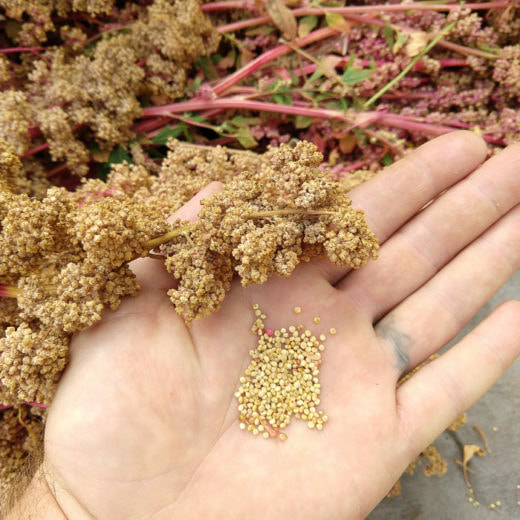- Vegetables
- >
- Grain Seeds
- >
- Gluten-Free Grains
- >
- Apellewa Quinoa
Apellewa Quinoa
This is an amazing food plant, and I'm so glad to have it back. The earliest quinoa available, as far as I can determine. Apellewa was unearthed by Ellen Bartholomew, quinoa grower extraordinaire, a few years ago. She immediately realized that it was a special quinoa, earlier than any other variety, and yet yielding large amounts of high-quality grain. AND the grain size is larger than most other quinoas grown in North America. One of the problems with quinoa growing has been that most quinoas able to grow outside of their South American home have very small seed, not as large as the imported seed Americans are used to buying. Apellewa is a breakthrough in many respects. Short plants are 4 to 5 feet. Seedheads are large and usually cream colored, though there are some in the pink range. Seed is light colored and very high quality. We are proud to bring you this outstanding variety. 300 seeds
See long description below for growing info. Photo courtesy of Adaptive Seeds.
Recently, farmers trying to create a domestic supply for market have developed new guidelines for field spacing. They are using closer spacing in order to grow unbranched plants, which can then be harvested all at once. While the yield is not as high per plant, it is very high per square foot. The latest information I have is that the recommendation for unbranched plants is to sow in rows 24" apart, with plants 8" apart. I have heard of large plantings with tractor and seed drill using spacings as close as 2". Photo courtesy of Adaptive Seeds.
Quinoa gives a better yield of grain than many similar crops simply because birds seldom eat it. The reason is that each grain has a coating of bitter soap-like compounds (saponins) that deters both birds and insect pests. A blender or food processor can be used to agitate the water so that rinsing is quick and easy. Soaking and blanching are other methods. The rinse water can be used as laundry soap.
You should harvest when the seed is hard, but the seedheads still retain their color. Rub the seed out of the tops, with the feet or gloved hands. You can screen out a lot of the chaff using 1/8" and 1/16" screens, then hand winnowing with a fan or wind. Window screening is cheap, readily available, and useful size for quinoa.

